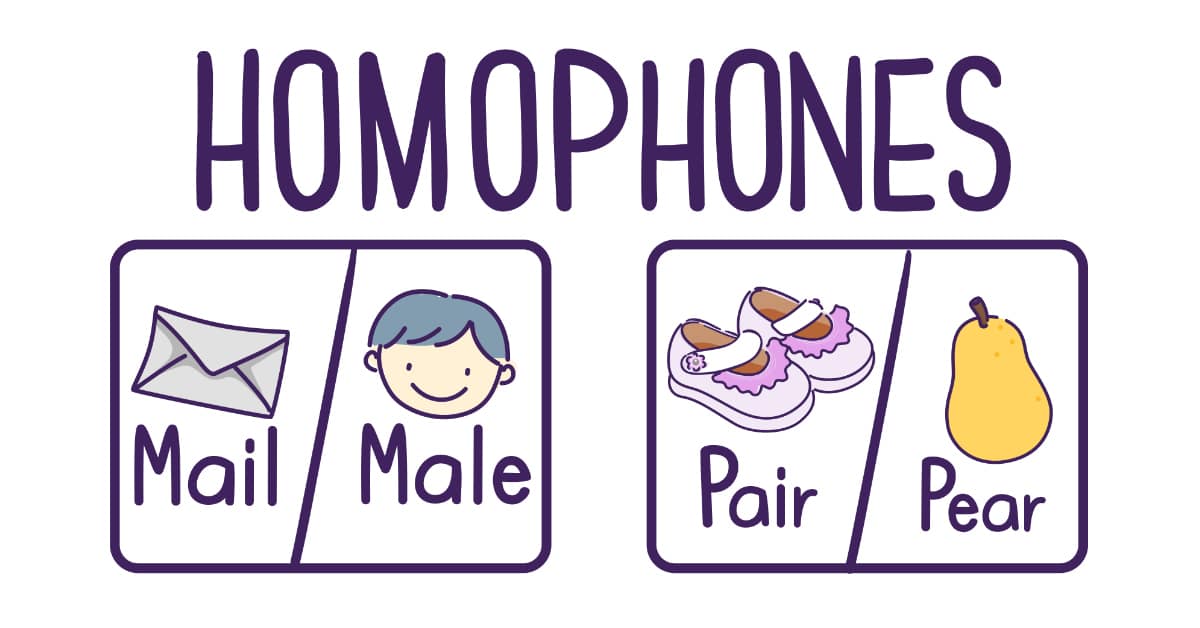Learning Spanish will open many doors for you since it is one of the most spoken languages around the world. It will help you make new international friends; give you better job opportunities, and you’ll learn more about the culture when you travel to a Spanish-speaking country. Learning Spanish is a whole experience, but it is also a challenge. But, hey, if you chose to learn a new language, it is because you like challenges, and you won’t regret it.
One of the trickiest things about the Spanish language is the palabras homófonas or homófonos (homophones). Sometimes even native speakers get confused with these words and end up writing all homophones the same way! So, whether you want to chat with a Spanish friend, write your resume for a Spanish job position, or travel abroad, here’s a list of Spanish homophones to help you understand the language better.
What are Homophones?
First you need to know about the palabras homónimas or homónimos (homonyms). Homonyms are words that sound and/or are written the same way, but the meaning and etymology are different. Based on that, there are two types of homonyms: homophones and homographs. For this blog, we’ll focus on homophones.
Homófono comes from the Greek word homophonos, and it means “that it produces the same sound”. Then, homophones are words that sound the same but their spelling and meaning are different. There lies the confusion. People usually write them all the same way because they don’t hear any difference.
In some Spanish countries, there are words that don’t sound identical because some letters are pronounced differently. For example, in Spain they pronounce the ‘z’ and the ‘s’ differently, while in Mexico the pronunciation is the same. Or there are some places that distinguish between the sounds of ‘y’ and ‘ll’, though it’s not very common anymore. Keep that in mind when you start learning Spanish homophones.
Spanish Homophones
1. Hola vs Ola
Hola is “hello”. Ola means “wave”.
2. Hecho vs Echo
This is a very common mistake, even among native Spanish speakers. Hecho means “made or done”. Echo is the present tense of the verb echar “to throw” in the first person singular. For example:
- Está hecho. (It’s done.)
- Hecho en México. (Made in Mexico.)
- Yo no echo basura a la calle. (I don’t throw litter on the streets.)
3. Abrazar vs Abrasar
This is a mistake that might be dangerous. Abrazar means “to hug”. Abrasar means “to burn”. So, you should never write “¿Me abrasas?”, because you might be asking for something you don’t really want. Of course, if you make this mistake people will probably know what you actually meant.
4. Bota vs Vota
Bota is “boot”. Vota is the present tense, third person singular of the verb, “to vote”.
5. Botar vs Votar
Botar is to throw something away or to break up with someone. It also means to bounce something. Votar is “to vote”.
6. Bello vs Vello
Bello means “beautiful”. The hair on the head is cabello. Vello is the hair that grows in other parts of the human body other than the head. Vello also refers to the hair that covers some fruits.
7. Vaya vs Valla vs Baya
Yes, these are three confusing words! Vaya is the subjunctive form of the present tense of the verb, “to go”. It can also be used as an interjection. Valla is a “fence”. Baya means “berry”. For example:
- Vaya al museo. (Go to the museum.)
- ¡Vaya! El mago me engañó. (Wow! The magician tricked me.)
- El caballo saltó la valla. (The horse jumped the fence.)
- La baya está ácida. (The berry is sour.)
8. Coser vs Cocer
Coser is “to sew”. Cocer is “to boil”.
9. Taza vs Tasa
Taza means “cup”. Tasa means “rate”.
10. Casa vs Caza
Casa means “house”. Caza is “hunting”. It is also the third person singular of the present of the verb, “to hunt”. It’s also what people call the animals that they hunt.
11. Cien vs Sien
Cien is a “hundred”. Sien means “temple”, in the anatomical sense, next to your forehead.
12. Tubo vs Tuvo
Tubo means “tube”. Tuvo is the third person singular of the past tense of the verb, tener (to have). It can also be used with the second person singular, usted.
13. Se vs Sé
Se is a third person pronoun.
- Se bañó. (He/She took a shower.)
- Se bañaron. (They took a shower.)
- El juguete se rompió. (The toy broke.)
Sé means I know. For example: “Sé lo que hiciste.” (I know what you did.)
14. Hay vs Ay
Hay means “there is” or “there are”. Ay is an interjection. For example:
- Hay pastel. (There’s cake.)
- ¡Ay! Me dolió. (Ouch! It hurt me.)
15. Halla vs Haya
Halla is the third person singular of the present tense of the verb, hallar (to find). It can also be used with the second person singular usted, or the second person singular in its imperative mood. Haya is the subjunctive mood of the first and third person singular of the verb, haber (to have) in the present tense.
16. Ves vs Vez
Ves is the second person singular of the verb ver (to see) in the present tense. Vez refers to a particular time. For example: “Esta vez sí le haré caso a mi mamá” (This time I will listen to my mom). “Aquella vez que me salté la escuela” (That time I skipped school).
17. Varón vs Barón
Varón means “man”. Barón is “baron”.
18. Asia vs hacia
Asia is the continent of Asia. Hacia means “towards”.
19. Sabia vs Savia
Sabia is the feminine of “wise”. Savia is a liquid inside the flowers that helps with their nutrition.
20. Siervo vs Ciervo
Siervo is a “servant”, especially referring to the ones from the feudalism era. It’s also usually used to refer to a strong follower of God. Ciervo means deer.
Practice Makes Perfect!
Since Spanish homophones sound the same, it might seem like a difficult topic to master. It’s true that you have to be careful with certain expressions, like Me voy a casar. (I’m going to get married). If you say voy a cazar, it means you’re “going hunting”. Quite different!
If you write that wrong, it can change the meaning. But most of the time people can identify the word you are referring to through the context. For example, if you say Tomaré café en mi nueva taza. (I’ll drink coffee in my new cup), people will probably know you mean the container.
If you would like one-on-one tutoring, check out our Spanish teachers! We have teachers from Spanish-speaking countries across the world that can help you with writing and pronunciation. Get started today and get 20% off your first month of classes with code TF20!





